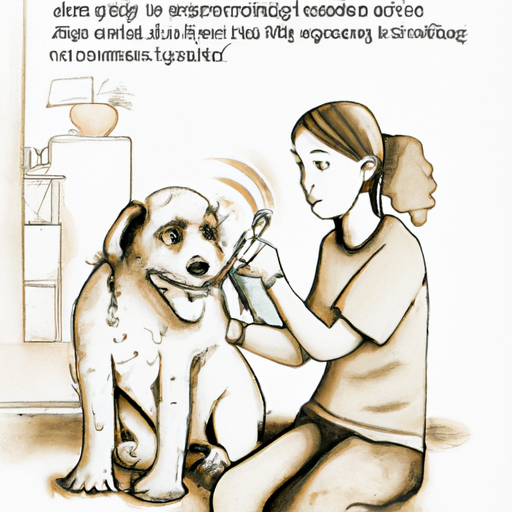Dog owners and caregivers, this one’s for you. If you’ve noticed your furry friend shaking their head more than usual, or if they seem to be in discomfort when you touch their ears, they could be dealing with an ear infection. Don’t worry – we’re here to guide you through the process of cleaning your dog’s infected ear.
1. Understand the Signs of an Ear Infection
Before you start the cleaning process, it’s important to recognize the symptoms of an ear infection.
- Redness and Swelling: If your dog’s ear looks red or swollen, it could be a sign of infection.
- Odor: An unusual smell coming from the ear is another common symptom.
- Discharge: Look for a brown, yellow, or bloody discharge.
- Behavioral Changes: If your dog is scratching at their ear, shaking their head, or seems to be in pain, they could have an ear infection.
2. Gather Your Supplies
Before you begin, make sure you have all the necessary supplies on hand. Here’s a list to get you started:
- A good quality dog ear cleaner
- Cotton balls or pads
- A towel
- Treats to reward your dog after the cleaning
| Item | Purpose |
|---|---|
| Dog Ear Cleaner | To clean the ear |
| Cotton Balls/Pads | To apply the cleaner |
| Towel | To protect your floors and furniture |
| Treats | To reward your dog |
3. The Cleaning Process
Now that you’ve got your supplies ready, let’s get down to the business of cleaning.
- Step 1: Gently hold your dog’s ear flap up to expose the ear canal.
- Step 2: Apply a generous amount of dog ear cleaning solution into the ear canal.
- Step 3: Gently massage the base of your dog’s ear to help the solution reach deeper into the ear canal.
- Step 4: Use a cotton ball or pad to gently wipe the inside of the ear flap and the outer part of the ear canal.
- Step 5: Reward your dog with a treat and lots of praise for their patience.
4. Frequent Mistakes to Avoid
Though cleaning your dog’s ear might seem straightforward, it’s easy to make mistakes. Avoid these common pitfalls to ensure a safe and effective cleaning.
- Using a Q-tip: This can push debris deeper into the ear canal and potentially damage the ear.
- Using Vinegar or Rubbing Alcohol: These substances can irritate an already infected ear.
- Over-cleaning: Overdoing the cleaning process can actually lead to more infections.
5. When to See a Vet
While minor ear infections can be dealt with at home, it’s important to know when to seek professional help. If your dog’s symptoms persist after cleaning, or if they seem to be in pain, it’s time to consult a vet.
FAQ
Q: How often should I clean my dog’s ears?
A: It depends on the breed and individual dog, but generally, once a month should be sufficient.
Q: Can I use human ear cleaner on my dog?
A: No, human products may contain ingredients that are harmful to dogs.
Q: How can I prevent ear infections in my dog?
A: Regular cleaning, proper diet, and avoiding water in the ears (during baths or swimming) can help prevent ear infections.
Q: What if my dog won’t let me clean their ears?
A: Try to make it a positive experience with treats and praise. If your dog is still resistant, it may be best to seek professional help.
Remember, ear infections can be painful for your dog. Always approach the cleaning process with patience and care.



